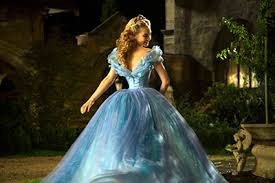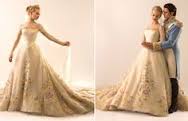 Most children believe in magic. They don’t flinch when hearing stories of whimsical happenings that are quite impossible. They don’t turn to logic in an attempt to figure out how incredible things could happen. They don’t allow the impracticality of a story to prevent them from believing in it. It was with a similar spirit of childlike belief that artistic pioneers collectively birthed magical realism (also known as magic realism or marvelous realism), a genre of painting that doesn’t question the existence of magic in the real world.
Most children believe in magic. They don’t flinch when hearing stories of whimsical happenings that are quite impossible. They don’t turn to logic in an attempt to figure out how incredible things could happen. They don’t allow the impracticality of a story to prevent them from believing in it. It was with a similar spirit of childlike belief that artistic pioneers collectively birthed magical realism (also known as magic realism or marvelous realism), a genre of painting that doesn’t question the existence of magic in the real world.
Magical realism has an uncanny way of touching the deepest parts of a person’s heart. The profound emotional response this genre of artwork provokes is precisely what is responsible for its popularity. Perhaps the most beautiful thing about magic realism is its sense of mystery.
Characteristics of Magical Realism
The term ‘magic realism’ was coined in 1925 by a writer named Franz Roh. Interestingly, the genre itself is an American art style. Magical realism was most prominent from 1943 to the 1950s.
 As explained in the article A Short History of Magic Realism, magical realism paintings are “typified by remarkable detail and sharp focus. (Magic realism) tricks us by hiding unexpected or suggestive content in what at first might seem to be a common or ordinary scene.” Magical realism paintings often are centered on contemporary subjects and sometimes have an eerie feel about them. This may be due in part to the sense of disconnectedness that these paintings typically possess. Also mentioned in A Short History of Magic Realism, “Juxtapositions of sharply rendered and detailed elements, both in the foreground and background, are used to develop an air of mystery or ambiguity (in magic realism). Although the paintings may incorporate everyday objects, their objective is not to appear dull or banal. Instead they attempt to show us the everyday world in new and unfamiliar ways.”
As explained in the article A Short History of Magic Realism, magical realism paintings are “typified by remarkable detail and sharp focus. (Magic realism) tricks us by hiding unexpected or suggestive content in what at first might seem to be a common or ordinary scene.” Magical realism paintings often are centered on contemporary subjects and sometimes have an eerie feel about them. This may be due in part to the sense of disconnectedness that these paintings typically possess. Also mentioned in A Short History of Magic Realism, “Juxtapositions of sharply rendered and detailed elements, both in the foreground and background, are used to develop an air of mystery or ambiguity (in magic realism). Although the paintings may incorporate everyday objects, their objective is not to appear dull or banal. Instead they attempt to show us the everyday world in new and unfamiliar ways.”
Who Put the Magic in Magical Realism?
There are many artists who are responsible for the development of the art movement/genre called magical realism. Henri Rousseau and Giorgio de Chirico are some of the earliest influencers of this whimsical style of art. Others who are well know for their magical realism paintings include Ivan Albright, Paul Cadmus, Phillip Evergood, and George Tooker.
Magic realism artwork stretches the imagination, challenges our beliefs about what is possible, and represents a beautiful, unusual world that begs to be explored. Are you a fan of magical realism? If so, who is your favorite artist or painting related to this genre? Share with us in the comments section below.
Read more Segmation blog posts about art and color:
The Visionary Work of Gustave Moreau
Alfred Stevens – A Life Immersed in Art
Jan Havickszoon Steen – One of the Greatest Artists of the Dutch Golden Age
Be an Artist in 2 minutes with Segmation SegPlay® PC (see more details here)
SegPlay® Mobile iTunes now available for iPhone and iPad






